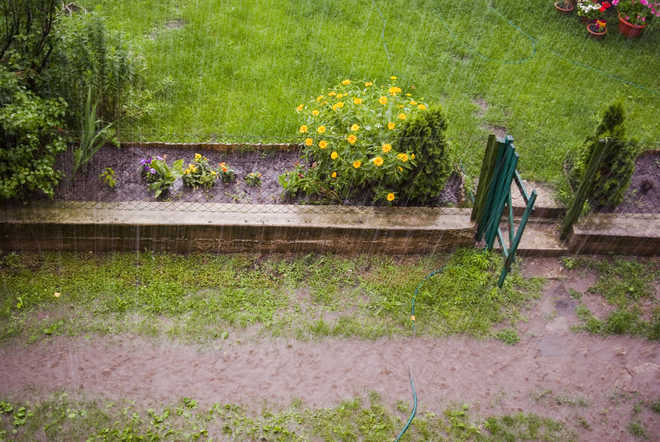
Satish Narula
A gardener waits for one full year for the arrival of monsoon. This is the time when plants multiply and the plants that were damaged by high temperatures recover and put forth new growth. Rain is welcome but too much of it, especially within a short span, is a gardener’s nightmare. This is more so when the torrential rain comes after hot days, a typical of climate change pattern.
What happens to the garden and how can we carry out the damage control?
The cause first. The boundary walls of a house provide limited outlet to the water accumulated inside. To add to it, due to the ever-rising level of roads, the water from outside enters the garden. The soil gets so saturated with moisture that it takes a long time to dry.
And nothing could be more damaging. Standing water not only chokes the roots but also causes rotting. Many a water-borne disease also sets in and damages even the main trunk of trees or shrubs. The newly planted seedlings almost vanish. The soil gets loose and if the rain is followed by high wind, the damage gets multiplied. The trees or shrubs may get uprooted or bend. There may be splitting of branches or breakage.
The priority in such cases is to provide effective drainage and removal of water making sure that there is no further stagnation. This can be done by providing gullies towards the periphery and providing proper outlets. Dismantle the plant basins and make a gentle slope outwards so that there is no stagnation around the main stem. Do not make the mistake of accumulating loose earth around the main trunk 'to keep water away from it'. Then, the moisture will remain locked, causing rotting.
Once you get rid of the excess water from the garden, look for damages caused to the plants. It is usually breakage of stems. Breaking of stems is one kind of damage and pest infestation at the broken end is another. The latter is a long-term damage. Remove such branches using a pruning saw. Never use an axe or other such equipment for the job. Smear the cut ends with some disinfectant. If nothing else is handy, use blitox slurry. This is made by adding some water in the powder. Destroy the wood as this becomes a potential source of infections. The dead wood rots very fast in this season.
The trees that have bent, may not straighten at one go. Provide a support and keep tightening that support over a period of time. This could be done by tying, using a rope that is secured to some fixed structure. Wait for some days before putting new seedlings.
(Dr Narula is Panchkula-based horticulturist and landscapist)



























